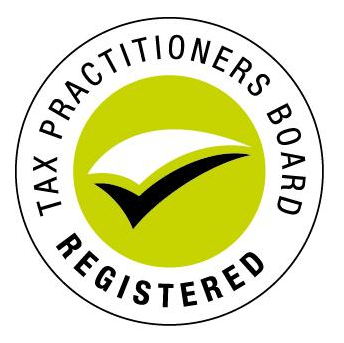find it useful? Please subscribe to our monthly newsletter
Say hello
Thank you for subscribing to our monthly newsletter.
Oops, there was an error sending your message.
Please try again later.
Please try again later.

news

By OzLedger
•
03 Sep, 2022
All SMSF trustees or directors must appoint an approved SMSF auditor to audit their fund every year. Not only is an annual audit mandatory but it must be conducted by an approved SMSF auditor who is registered with the Australian Securities and Investments Commission (ASIC). But who is an approved SMSF auditor and what do you need to consider when appointing one for your SMSF? Who is an approved SMSF auditor? An SMSF auditor is responsible for analysing your fund’s financial statements and makes sure that your fund is compliant with superannuation law. They must report any non-compliance issues to all fund trustees and the ATO. To qualify as an approved SMSF auditor, a person must demonstrate: • they hold the necessary academic qualifications, such as a degree (minimum three years) in accounting which included a course in auditing • they have at least 300 hours experience auditing SMSFs in the previous three years under the direction of an approved SMSF auditor • they have passed a competency exam, and • ASIC is satisfied that they: ‒ are unlikely to contravene the ongoing obligations of an approved SMSF auditor ‒ are capable of performing the duties of an approved SMSF auditor ‒ are a fit and proper person to be an approved SMSF auditor ‒ hold adequate and appropriate professional indemnity insurance ‒ are an Australian resident ‒ are not subject to an enforceable disqualification or suspension order. To maintain their approved SMSF auditor status, auditors must satisfy continuing professional development requirements, maintain adequate and appropriate levels of professional indemnity insurance and report to ASIC annually.

By OzLedger
•
03 Sep, 2022
With unemployment at historic lows, workers are in demand and are also switching jobs at record rates. There are a range of issues employers should be aware of when hiring. Know the law Before hiring a new employee, make sure you know your rights and responsibilities. The minimum terms and conditions of employment come from an award, registered agreement and contract of employment, and also the National Employment Standards (NES). An employment contract or registered agreement can’t provide for less than what is in the NES. To find the right award, and if an enterprise agreement applies, visit the Fair Work Commission website. Getting pay right To work out the right pay when hiring a new employee, you need to decide on the person’s employment status – whether they will be a full-time, part-time or casual employee. Visit the Fair Work website or ask us for guidance. On the Fair Work website, you can also locate the minimum pay rates, penalties and allowances that apply using their Pay and Conditions Tool. Employment contracts It’s important that your employment contracts protect your business and your staff. To help you get things right, use the business.gov.au – Employment Contract Tool to create an employment contract that’s tailored to your business needs and complies with workplace laws. To use this tool, your employee must be full-time, part-time or casual, covered by an award, paid an hourly or weekly wage.

By OzLedger
•
04 Feb, 2022
Did you know that there are approximately 10 million unintended multiple super accounts, which represents around 35% of all member accounts held by funds? While in some cases this outcome may be intended, more often than not the creation of multiple accounts is unintended and mainly occurs when employees change jobs and do not nominate the same (or any) account for their super guarantee to be paid into. These multiple super accounts are costing Australians an extra $690 million in duplicated administration fees and $1.9 billion in insurance premiums per year, which is eroding many Australians’ hard earned super benefits. If you are one of these individuals with multiple super accounts, there may be benefits to rolling your accounts onto one super fund. The benefits of consolidating funds There are a number of benefits of rolling your accounts into one fund, including: Prevent duplicated fees – having one super fund means one set of fees, potentially saving you hundreds and thousands of dollars over your lifetime. Easier to manage – having all your super in one account makes it easier to manage as there is less paperwork and administration to worry about. Maximise your investment returns – once you have consolidated your funds, it will be easier to manage your investment strategy and you’ll be able to maximise the funds to invest.

By OzLedger
•
30 Sep, 2021
Imagine you’re lucky enough to inherit, say, four post-CGT rental properties from a deceased parent – but what happens when your sibling also inherits a half-share of these? While you both acquire a very valuable 50% interest across four properties, it’s safe to say that in most scenarios, you’d both rather have a 100% interest in two of them. CGT triggered Assuming both siblings desire a 100% interest in two properties each (rather than a 50% interest in four properties), they’re going to have to do a bit of “horse trading” between them. This means that each sibling has to give up their 50% interest in two of the four properties, in exchange for acquiring a 50% interest in the other two properties. It’s important to note that such an exchange of interests will trigger CGT consequences. This is because the interest exchanged (or disposed of) is a CGT asset with a particular cost base (under the inherited asset rules in s 128-15), and the capital proceeds for this CGT event will be the market value of the interest acquired in another property. However, the benefit of the CGT discount should be available. Moreover, because none of the properties are a main residence or a pre-CGT dwelling, the full CGT exemption rules in s 118-195 cannot be brought into play. Even so, there may be a couple of solutions to this problem that allow both siblings to get their desired 100% interest each in two properties – without triggering any CGT consequences. Solution 1: A broadly written will If the will’s been written in broad enough terms, the executor could use their power/discretion to treat the properties as a pool of assets that can be divided equally between the siblings (ie, so they can get two each). While this presents one solution, adjustments may still be required if some of the properties have a greater contingent CGT liability attached to them than others (at least at the time of distribution) – and this would have to be accounted for in some way to keep both siblings happy. At any rate, this becomes a matter of the interpretation of the will – a complex topic that’s beyond the scope of this article – and other issues relating to trustee powers may need to be factored in.

By OzLedger
•
30 Sep, 2021
The COVID-19 pandemic has resulted in more employees working from home than ever before. This, in turn, has resulted in such people being able to claim a range of deductions for various “running expenses” associated with working from home. These expenses include electricity, phone service, cleaning, decline in the value of equipment, furniture and furnishing repairs, and so on. To make things easier, the ATO even provided several “short-cut” options to claim “working from home” expenses (as opposed to claiming the relevant proportion of the actual costs). In addition, many people who operate a business (eg, as a sole trader or in partnership) have been required to use part of their home as a place of business – or may have been doing so for many years anyhow. They, too, are entitled to claim various “running expenses” associated with working from home. Moreover, if part of the home has the character of a place of business and is set aside as such, then such persons would generally also be able to claim a portion of occupancy expenses (such as mortgage interest or rent, council rates, land taxes, house insurance premiums) in addition to running expenses. This is because part of the home is an asset that is used in carrying on their business. However, where part of a home is being used as a business to generate assessable income, the homeowner will not be able to sell their home CGT-free. Instead, a partial CGT main residence exemption will apply on the basis that part of the home has been used to produce assessable income (in the same way it would apply if part of the home had been rented at arm’s length).

By OzLedger
•
05 Sep, 2021
If you are an employer registered for goods and services tax (GST), you may be entitled to claim GST credits for payments you make to reimburse employees (including company directors) or partners in a partnership for certain work-related expenses. If you are running a business, you will be entitled to a GST credit for an employee-reimbursed expense if the following criteria are met: the employee’s (or associate’s) expense is directly related to their activities as your employee or the reimbursement is an “expense payment benefit” the sale of the item bought by your employee was taxable (that is, not “input taxed”), and your employee is not directly entitled to a GST credit for the expense The ATO says a business can claim GST credits where it has relevant documents such as receipts or tax invoices issued to the employee. These will need to be provided to substantiate claims for reimbursement. A business that is entitled to a GST credit can claim it in a Business Activity Statement once it has been provided with this documentation. An “expense payment benefit” is made, according to the ATO, when a business makes a payment to, or reimburses, another person “in whole or in part, of an amount of money spent by your employee as part of their employment with you”. Fringe benefits tax (FBT) may apply however. A business is not entitled to a GST credit if it has: reimbursed “non-deductible expenses”, such as the portion of expenses relating to entertaining clients (usually only half of such expenses are deductible for the provision of entertainment)

By OzLedger
•
05 Sep, 2021
Sometimes an individual or couple decide to buy a new home before selling their existing one. In such cases, a concession exists that allows for both houses to be treated as a main residence for up to six months – but only if certain conditions are met. Section 118-140 of the Income Tax Assessment Act 1997 (ITAA 1997) provides that both the old and new dwellings can be treated as the taxpayer’s main residence for the lesser of: The six-month period immediately before the sale of the existing home, or The period between the purchase of the new home and the sale of the existing home. So if it takes a taxpayer less than six months to settle on the sale of their original home after having settled on the sale of their new home, then both homes can be treated as the taxpayer’s main residence during this period. On the other hand, if more than six months passes between the settlement of the new home and the (later) settlement of the original home, both dwellings will only be treated as a main residence for a maximum period of six months before the settlement on the original home. In the latter instance, a partial CGT exemption will apply during the excess period (i.e. after the maximum six months) to either the original or new home. Which of them it is will depend on which did not qualify as the taxpayer’s main residence. Other than the fundamental requirement that the new home must become the taxpayer’s main residence, the other two key requirements that must be met for the concession to apply are: The existing home must have been the taxpayer’s main residence for at least 3 of the 12 months before the taxpayer’s “ownership interest” in it ends, and

By OzLedger
•
22 Aug, 2021
Who can (and can’t) be part a family group for the purpose of making a family trust election (FTE)? As you can see by the diagram below, the ‘family group’ is dependent on the choice of the ‘test individual’. Once that person is chosen, the family group includes the person’s spouse, plus any of their children, grandchildren, parents, grand- parents, brothers, sisters, nephews, or nieces. The spouses of any of these people are also included. The family group can include a de facto spouse, stepchildren and half-brothers and half-sisters, but not aunts and uncles, cousins, great-grandchildren, or stepbrothers and stepsisters. The spouse of a deceased test individual will continue as a member, but not if they partner up again. And where a married test individual is divorced, the family group membership of their former spouse is ended. However, the former spouse is still in the family group in relation to distributions. Importantly, if the test individual dies, the trust remains a family trust and the family group continues to be worked out by reference to the test individual. Where an FTE is made, the rules that limit the deductibility of prior year and current year losses and bad debt deductions are much less onerous. Only the income injection rule applies, and then only where a person outside the family group is involved. Otherwise, there is also a 50% stake test, a control test and a pattern of distribution test that have to be satisfied. Having an FTE also relaxes the company loss tracing rules, the holding period governing access to franking credits and the application of the trust beneficiary reporting rules. Keep the diagram handy when confirm who the beneficiaries of a family trust can be, without paying family trust distributions tax.
© 2024
All Rights Reserved by OzLedger.
Liability is limited by a scheme approved under Professional Standards Legislation
© 2024
All Rights Reserved by OzLedger I Liability is limited by a scheme approved under Professional Standards Legislation | Privacy Policy




